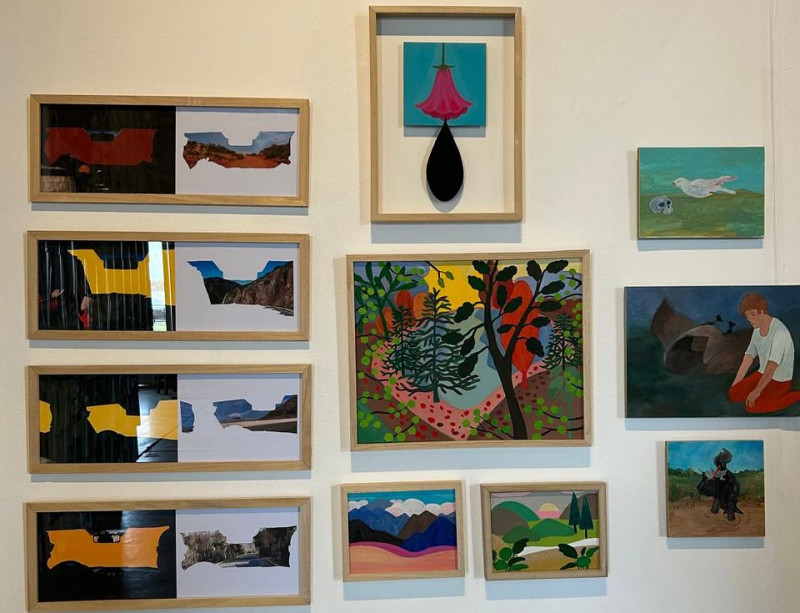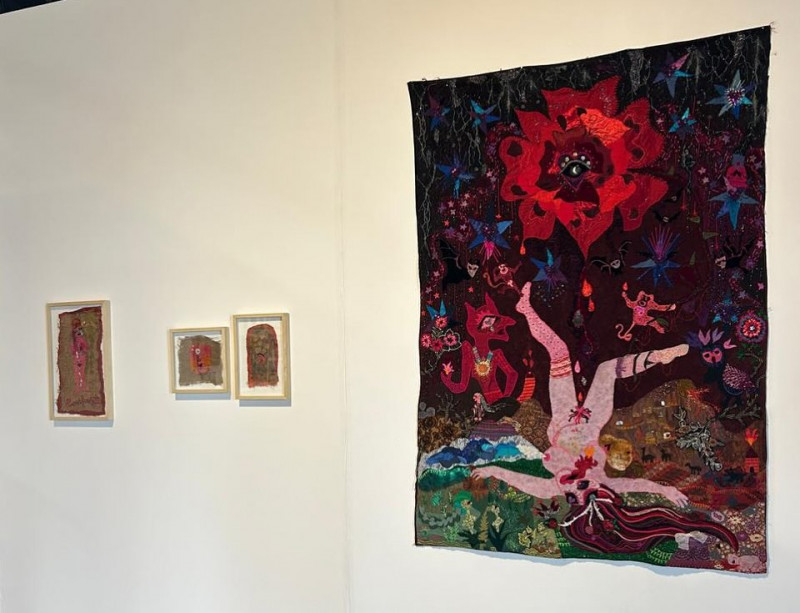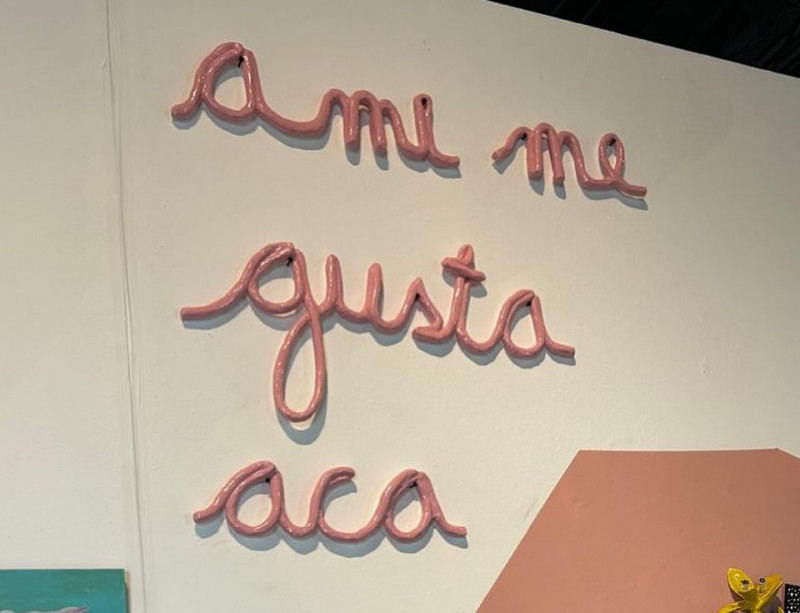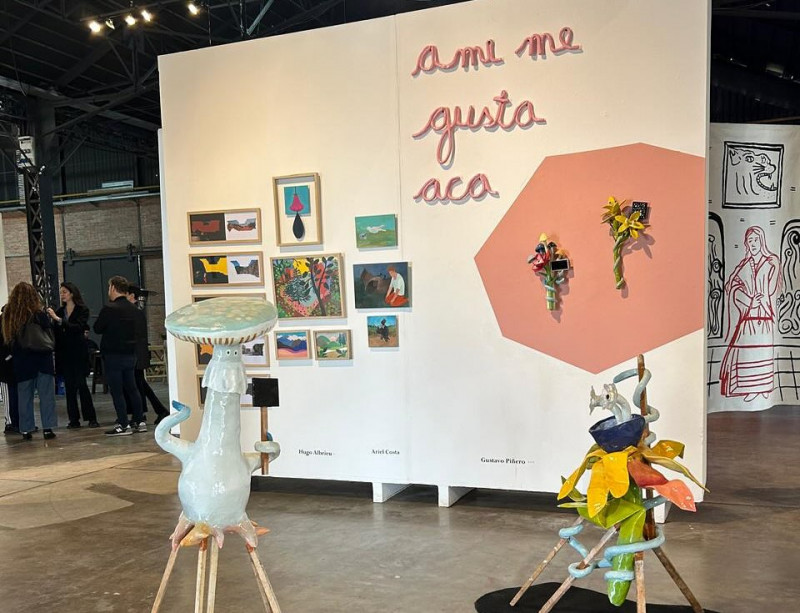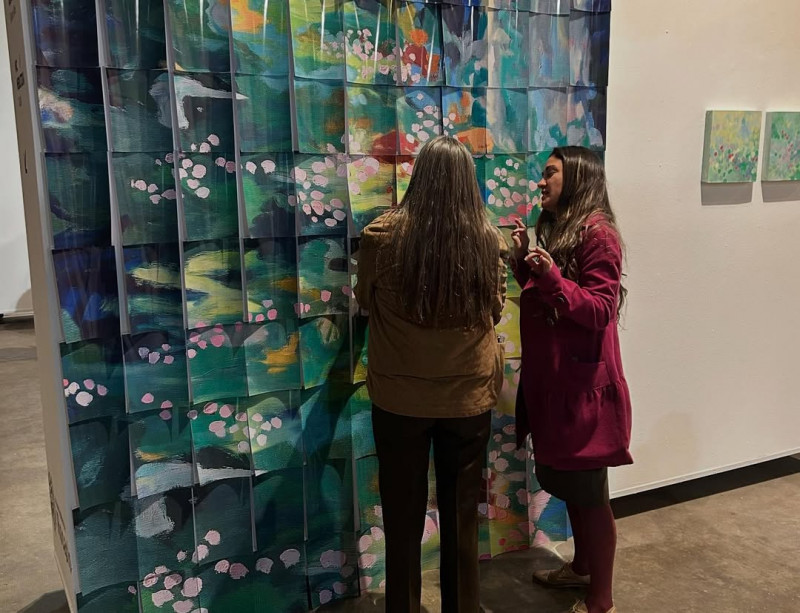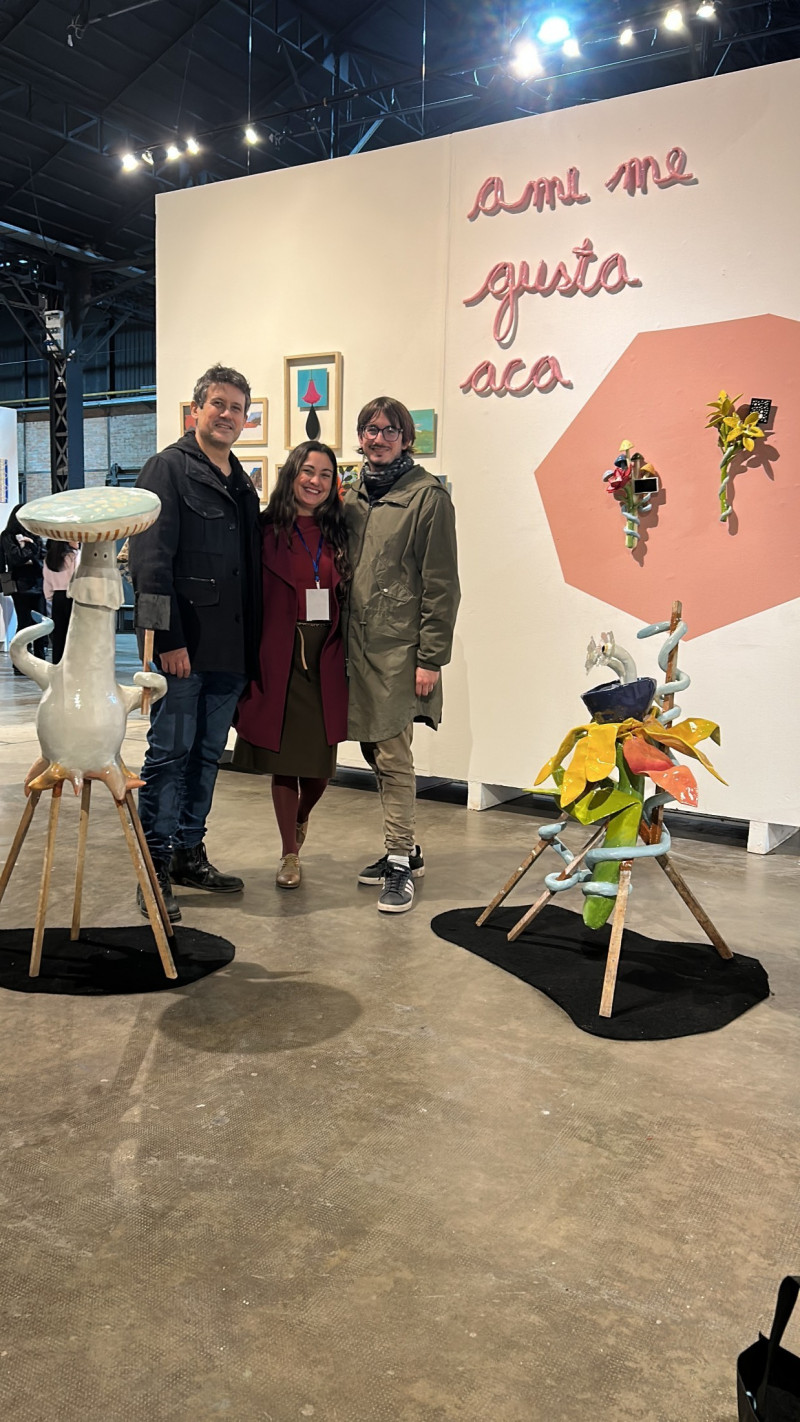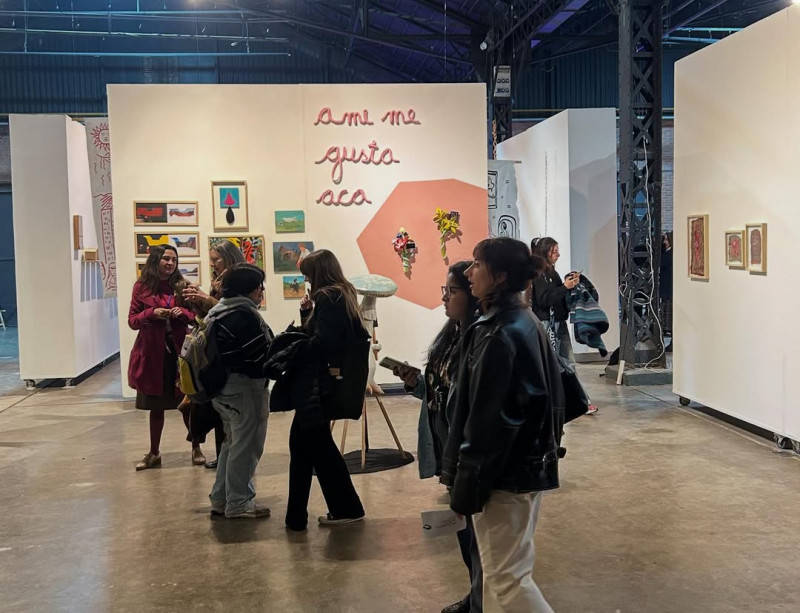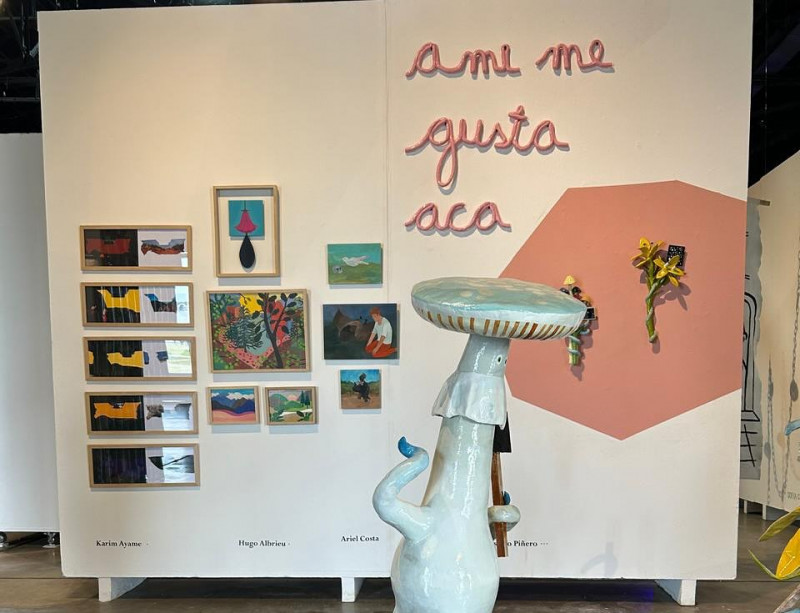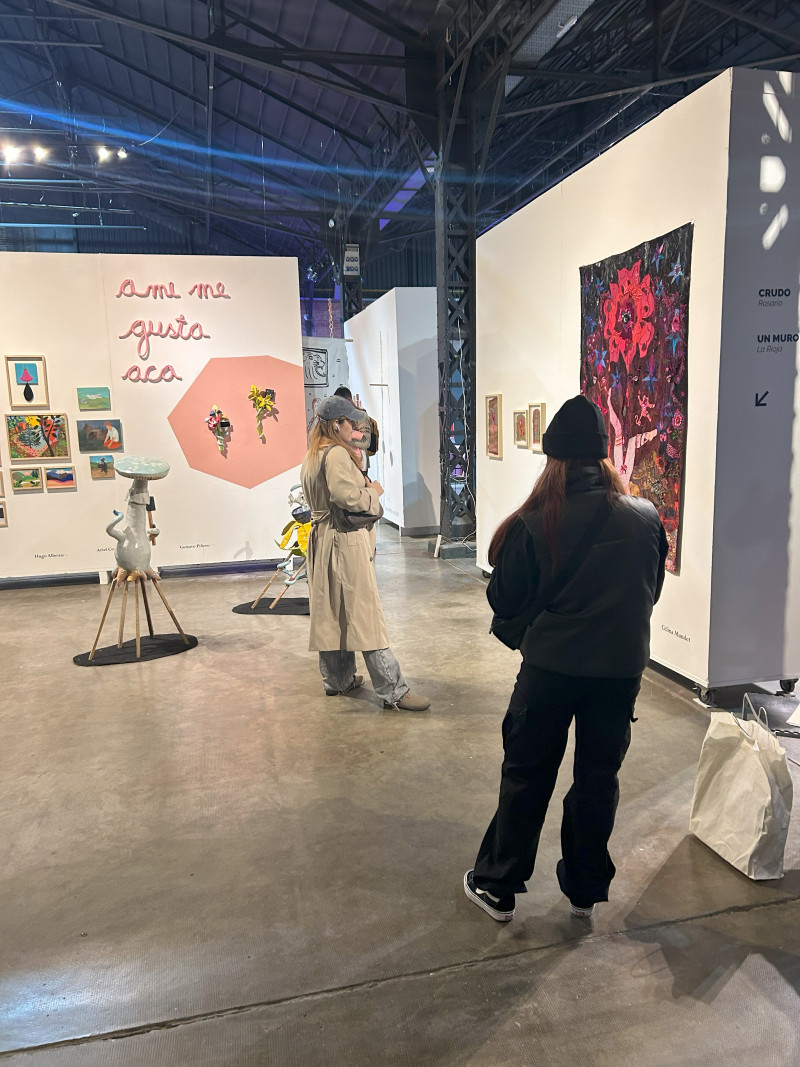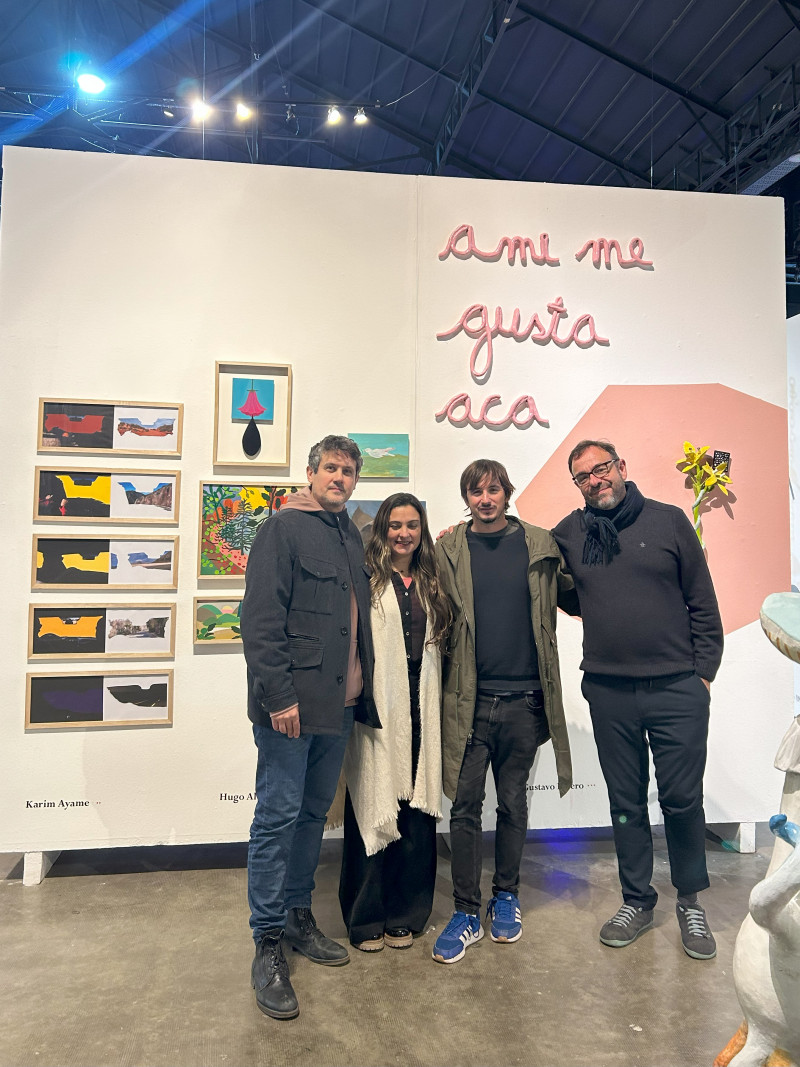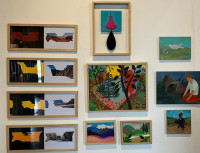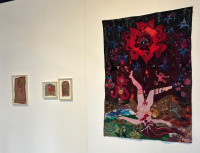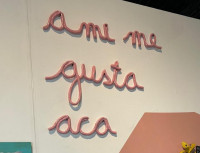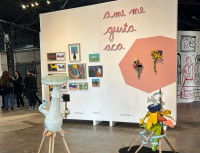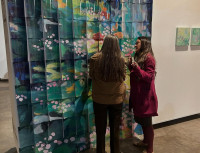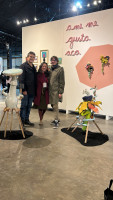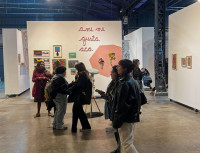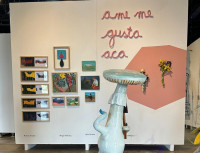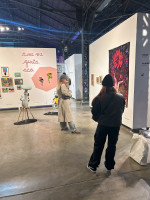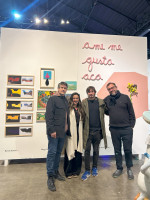Feria | Microferia de Arte Rosario | CRUDO + Un Muro
How is a national idiosyncrasy built in relation to cultural management and gallery work in Argentina? How is it shaped by those projects that were born outside Buenos Aires? Rosario and La Rioja are very different scenes —the former operating as a kind of center—, but in terms of management certain traits are repeated across the country. Europeans, for instance, are often struck by our multi-specialization: while they tend to focus on a single task, in Argentina artists also become curators, gallerists, managers, collectors, and so on.
Self-management becomes key, an indigenous trait. Faced with gaps in structure or support, those voids are filled by the artists’ own work. That is why, in the cultural fabric, affective bonds, relationships, and constant movement become fundamental. Argentina is vast, and scenes are often far apart from one another; thus, covering large stretches of territory becomes essential. Being both host and guest turns into a habitual practice.
In fact, that is how we met Hugo Albrieu —director of Un Muro and also an artist— at one of the first editions of MicroFeria. We were drawn to his work as a collector of art from the northwest of Argentina, his artistic production, and of course his capacity to energize and mobilize artists in the region through his house/art space/gallery. Likewise, the origin of CRUDO is also linked to artists who became gallerists, managers, and curators.
This proposal emerges from bonds and trust among artists who embody different situations and national scenes: Ariel Costa, based in Rosario, recurrently portrays the Chaco of his childhood and has managed an independent art space; Hugo Albrieu, director of Un Muro, paints the realities of the northern Argentina he inhabits; Celina Mundet, from San Luis, builds her work from her travels across the country, while also running an online cultural platform and organizing events; Gustavo Piñero, a recognized artist and manager from Córdoba, moves between the public and the private spheres; Flora Gómez, who paints the flora of La Rioja, has worked as a cultural manager both in public institutions and independent projects in La Rioja and Catamarca; and Karim Ayame, who creates from his journeys across the region and through collaborations with other artists, while also directing his own experimental art space.
Un Muro / CRUDO brings together artists who work through movement —traversing their regions and the national territory—, who portray and elaborate what is their own, and who embody multiple roles, from museum directors in Córdoba and Catamarca to founders of spaces such as Oficina 26, Fauna, Un Muro, or CRUDO. All of this nourishes an idiosyncrasy that grows out of self-management, affection, and a shared network.
Text by Fepi Farina
Un Muro + CRUDO
Artists:
Celina Mundet
Gustavo Piñero
Hugo Albrieu
Flora Gómez
Ariel Costa
Karim Ayame
Thursday 19, Friday 20, Saturday 21 & Sunday 22
At CEC Rosario, Argentina.
